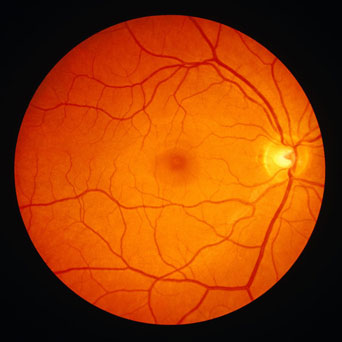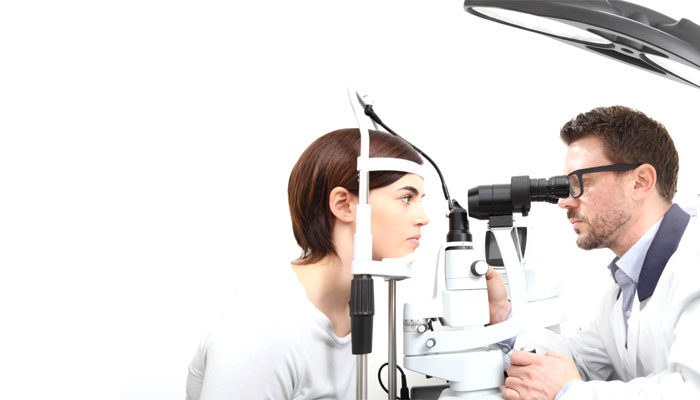Screening for pathologies
Whether due to genetics, a blow, an accident or certain illnesses, macular degeneration or aging, certain pathologies are difficult to detect by oneself.
Still, if you suffer from diabetes or hypertension, if you have a family history of eye disease, consult an ophthalmologist, even if your visual acuity is correct. Timely screening is indispensable in order to affect the development of disease.
If you wear prescription eyeglasses, an appointment with your ophthalmologist at least every three years will be a medical checkup as well as an eye checkup.
The ophthalmologist will examine your retina, eye movement, fields of vision and visual acuity.

The transparent crystalline lens that focuses rays of light on the center of the retina thickens with age.
This affliction, generally due to natural aging of the eye may, however, be caused by something else, like a detached retina, trauma or overexposure to UV rays. It is also important to protect your eyes from the sun throughout your life. Your optician can advise you to wear suitable sunglasses to prevent the harmful effects of UV rays.
The first signs of cataract can be the feeling that there is a veil in front of one eye or both, blinding by the sun, visual acuity that continues to decline in spite of wearing corrective eyeglasses, especially if you are over 60 years old.
Surgery is the only way to replace this lens that has become opaque. Another, artificial lens, with the same optical properties as your crystalline lens, will be implanted through light surgery, usually ambulatory, after which you will see as well as before.
Your optician is present to accompany you during all the stages of your cataract. Do not hesitate to come and discuss it with him.
The optic nerve transmits images to the visual cortex of your brain. These images then are registered through a complex process. A significant increase in intraocular pressure can compress the optic nerve. This is glaucoma.
A violent blow, a genetic predisposition or a heavy ametropia can be reasons to fear glaucoma.
First signs are strong pain, rapid loss of visual acuity moving from the periphery to the center, headache, red eye or dilated pupils. People over 40 are those most frequently afflicted.
It is important to have your intraocular pressure checked regularly by your ophthalmologist.
Glaucoma is an irreversible pathology that, nevertheless, can be stabilized by medical treatment for life. Laser treatment or surgery may be an option in certain cases.
The macula, or central area of the retina, conditions the quality of visual acuity.
It adjusts the precision of images when images are observed in detail. It contains pigments that protect against blue light that is toxic for sight. Deterioration, overly rapid deterioration of the macula leads to this pathology, commonly called ARMD.
It is often difficult to detect. Loss of color and contrast perception, reduced visual acuity, distorted vision and a spot in front of the eye are the first symptoms. Central vision is then lost, leaving only peripheral vision. Just 1 millimeter wide, the macula is only a small part of the retina.
Resources to deal with ARMD remain limited so far, even though research continues.
When ARMD is diagnosed early, laser treatment, photodynamic therapy or medication can slow the development of the illness and the loss of central vision. A visual aid that enlarges the image, plus visual therapy, makes it possible to optimize peripheral vision.
Diabetes raises the amount of sugar in the blood, which alters the blood vessels and arteries of the retina. Of diabetics, 50% are affected by this pathology.
It is painless and there are no symptoms until the appearance of, among other things, edema, fatty deposits, hemorrhage or detachment of the retina. It is the perfect example of why it is necessary to go to the ophthalmologist for regular checkups. Experience shows that diabetics should be followed closely.
If there is significant loss of visual acuity, it is always possible to make the most of residual vision with enlarging systems. Laser treatment can be effective when there is early diagnosis.
Depending on the case, medical treatment or surgery will be proposed.

